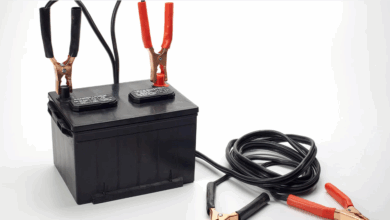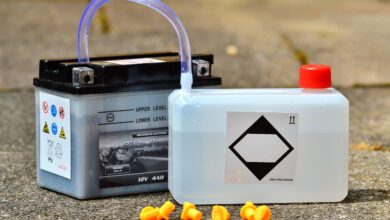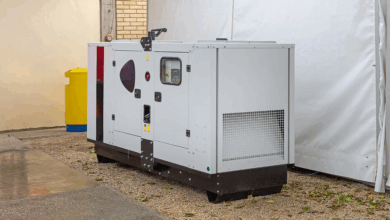Best Home Generators

Power Through the Outage: Your Guide to the Best Home Generators
In today’s world, our reliance on electricity is absolute. From keeping the lights on and the fridge cold to powering essential medical equipment and staying connected, an interruption in power can range from a minor inconvenience to a significant problem. That’s where home generators come in, offering a reliable backup power source when the grid goes down.
But with various types, sizes, and features available, choosing the "best" home generator can feel overwhelming. The truth is, the "best" generator isn’t a one-size-fits-all solution; it’s the one that best meets your specific needs, budget, and circumstances. This guide will walk you through the different types and key considerations to help you make an informed decision and keep your home powered when you need it most.
Understanding the Main Types of Home Generators
Home generators primarily fall into two main categories: portable and standby. Within these, there are variations that cater to different power needs and preferences.
-
Portable Generators:
- What they are: These are typically smaller, mobile units designed for temporary power. They usually run on gasoline, although some can use propane or be dual-fuel. You manually start them and connect appliances or extension cords directly to the generator’s outlets.
- Pros:
- Affordability: Generally the least expensive option upfront.
- Portability: Can be moved to different locations (home, camping, job site).
- Flexibility: Can power specific appliances you choose to plug in.
- Cons:
- Manual Operation: Requires manual starting, fueling, and connecting.
- Noise: Can be quite loud.
- Fuel Storage: Requires storing gasoline, which has a limited shelf life and poses safety risks.
- Limited Power: Typically power only essential circuits or specific items.
- Safety: Risk of carbon monoxide poisoning if not operated outdoors and away from windows/doors. Risk of "backfeeding" the grid if improperly connected to the house (requires a transfer switch for home connection).
- When they are "Best": For occasional, short power outages; budget-conscious homeowners; those needing power in various locations; or those only needing to power a few essential appliances like a refrigerator, some lights, and phone chargers.
-
Inverter Generators:
- What they are: A type of portable generator that uses advanced technology to produce AC power, convert it to DC, and then invert it back to clean AC power. This process results in stable, high-quality power that is safe for sensitive electronics like laptops and smartphones. They are also known for being significantly quieter and more fuel-efficient than traditional portable generators.
- Pros:
- Quiet Operation: Much quieter than conventional portable generators.
- Clean Power: Safe for sensitive electronics.
- Fuel Efficiency: Often run longer on a tank of fuel.
- Portability: Still portable, though sometimes heavier at higher wattages.
- Parallel Capability: Many models can be linked together to double the power output.
- Cons:
- Higher Cost: More expensive than traditional portable generators of similar wattage.
- Lower Max Wattage (historically): While larger inverter generators are becoming more common, their highest wattage options are still generally lower than the largest conventional portables or standby units.
- When they are "Best": When quiet operation is a priority; needing portable power for sensitive electronics; camping or tailgating where noise is a concern; or for home backup where powering electronics and basic appliances is sufficient.
- Standby Generators (Automatic/Whole House):
- What they are: These are permanently installed units, typically outside your home, similar to an air conditioning unit. They are connected directly to your home’s electrical panel via an automatic transfer switch and usually run on natural gas or propane from your home’s supply. When grid power is interrupted, the transfer switch automatically detects the outage and starts the generator. Once grid power returns, the transfer switch shuts the generator off.
- Pros:
- Automatic Operation: Powers on automatically within seconds of an outage, with no manual intervention needed.
- High Power Output: Can often power your entire home, including HVAC systems and major appliances.
- Reliable Fuel Source: Connects to your natural gas or propane line (if available), eliminating the need for manual refueling during an extended outage.
- Convenience: Seamless transition to backup power.
- Adds Home Value: A permanent installation can be a selling point.
- Cons:
- High Cost: Significant upfront investment for the unit and professional installation.
- Not Portable: Fixed in place.
- Requires Professional Installation: Needs electrical and often gas plumbing work, permits, and professional setup.
- Maintenance: Requires regular professional maintenance.
- When they are "Best": For areas with frequent or long-duration power outages; homeowners who want the utmost convenience and reliability; those needing to power an entire home or essential heavy-duty appliances (like central air); or those with medical equipment requiring uninterrupted power.
Key Factors to Consider When Choosing
Once you understand the types, evaluate these factors based on your specific needs:
- Wattage Requirements: This is perhaps the most critical factor. Make a list of the appliances and systems you absolutely need to power during an outage. Note their "running watts" (the power needed to operate continuously) and "starting watts" (a higher surge of power needed to start motors in items like refrigerators or HVAC units). Add up the running watts and identify the item with the highest starting watts (you’ll only start things one at a time normally). Your generator’s running wattage should exceed your total running wattage, and its starting wattage capability needs to handle your highest starting requirement. It’s always better to slightly overestimate than underestimate.
- Fuel Type:
- Gasoline: Widely available, but requires storage and goes stale. Used mostly in portable generators.
- Propane: Longer shelf life than gas, burns cleaner, but requires a storage tank. Used in some portables, dual-fuel, and many standby generators.
- Natural Gas: Continuous supply from your home’s line, no storage needed. Only available if your home is connected to a natural gas utility. Primarily used in standby generators.
- Diesel: More fuel-efficient than gas/propane for larger loads, longer shelf life, but requires storage and can be noisy/smelly. Less common for residential.
- Dual Fuel: Offers flexibility by running on either gasoline or propane.
- Transfer Switch: Absolutely essential if you plan to connect a generator (even a portable one) directly to your home’s electrical panel to power wired circuits. A transfer switch isolates your home’s electrical system from the utility grid, preventing dangerous "backfeeding" which can injure or kill utility workers. Automatic transfer switches are standard with standby generators, while manual transfer switches are installed for connecting portables to panels.
- Noise Level: Generators can be loud. Decibel ratings (dB) indicate noise level. Quieter models (like inverters) are important in residential areas or if the generator will be near living spaces. Note that dB scales are logarithmic, so a difference of 10 dB is roughly twice the perceived loudness.
- Budget: Consider not just the purchase price but also installation costs (significant for standby), fuel costs, and ongoing maintenance.
- Safety Features: Look for features like automatic low-oil shutoff (prevents engine damage), overload protection, GFCI (Ground Fault Circuit Interrupter) outlets (reduces shock risk), and CO (Carbon Monoxide) shutoff sensors (critical for safety, especially with portables).
- Maintenance: All generators require regular maintenance (oil changes, filter replacements, battery checks for standby units) to ensure reliable operation. Standby generators often require professional service.
FAQs Section
- Q: How do I know what size generator I need (wattage)?
- A: List all the items you need to power. Find their running watts and starting watts (usually on a label or in the manual). Add up the running watts for everything you’ll use simultaneously. Then, find the item with the highest starting watts. Your generator’s running wattage needs to meet your total running load, and its starting wattage capacity must be able to handle that highest surge requirement when you turn that specific item on. It’s wise to consult an electrician or use online wattage calculators provided by generator manufacturers.
- Q: What is the difference between running watts and starting watts?
- A: Running watts is the continuous power an appliance needs to operate. Starting watts (or surge watts) is the extra burst of power required for a few seconds to start appliances with electric motors (like refrigerators, pumps, or air conditioners). Starting watts are always higher than running watts.
- Q: Can I plug a portable generator directly into my house outlets?
- A: NO, absolutely not. Plugging a generator into a wall outlet ("backfeeding") is extremely dangerous. It bypasses safety mechanisms, can electrify utility lines (endangering workers), and can severely damage your home’s wiring. A proper transfer switch (manual or automatic) is required to safely connect a generator to your home’s electrical system.
- Q: How long can a generator run continuously?
- A: This depends on the fuel type, the size of the fuel tank (for portables), the fuel source (for standby on gas/propane), and the load placed on the generator. Portable generators might run for 8-12 hours on a tank. Standby units on natural gas can run indefinitely as long as the gas supply is active. Those on propane are limited by the size of the propane tank.
- Q: Are home generators very loud?
- A: Traditional portable generators are typically quite loud (around 70-80+ dB at 23 feet). Inverter generators are significantly quieter (often 50-60 dB). Standby generators fall somewhere in between, and their noise is usually less of a concern as they are permanently installed away from windows and doors.
- Q: What kind of maintenance do generators require?
- A: Regular maintenance is crucial. This typically includes checking and changing the oil and oil filter, checking or replacing air filters and spark plugs, inspecting fuel lines, and testing the generator periodically (especially for standby units, which often have automatic weekly self-tests). Consult your owner’s manual for the specific maintenance schedule.
Conclusion
Choosing the "best" home generator is a personal decision driven by your specific power needs, budget, and desired level of convenience. Portable and inverter generators offer flexibility and affordability for powering essential items during shorter outages, while standby generators provide automatic, whole-house power for ultimate convenience and reliability during extended events.
By carefully assessing your wattage requirements, considering fuel options, understanding the importance of transfer switches and safety features, and factoring in noise and budget, you can navigate the options effectively. Investing in the right generator provides crucial peace of mind, ensuring that when the power goes out, your home remains a safe, functional, and comfortable haven. Take the time to evaluate your situation, calculate your needs, and select the generator that will best power your life through any interruption.




![How to Bypass CO Sensor on Generator – [4-Step Safety Guide]](https://www.generator411.com/wp-content/uploads/2025/08/co-sensor-on-generator-390x220.png)